- Home
- Embedded Automotive Network Development
Embedded Automotive Network Development
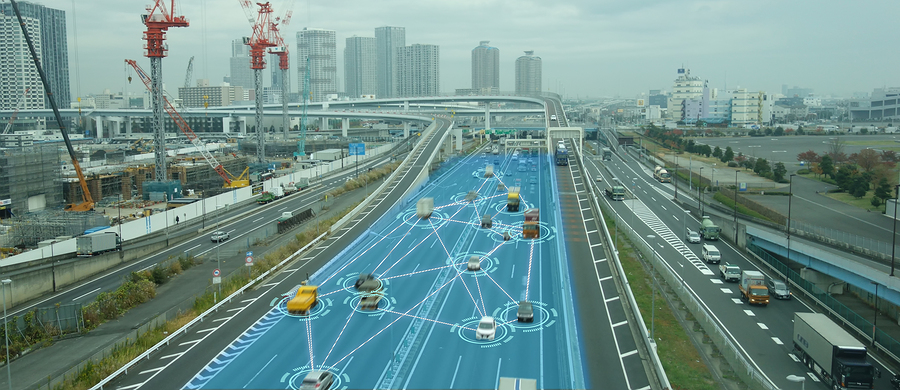
Designing and Programming Small Devices for Automotive Networks
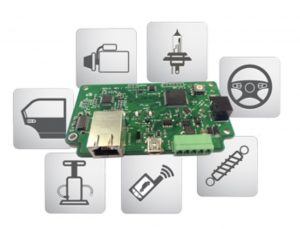 Copperhill Technologies was established as an electronics engineering and consulting business in 1993.
Copperhill Technologies was established as an electronics engineering and consulting business in 1993.
Our main focus is on the development, prototyping and sales of embedded systems for Automotive Ethernet, Controller Area Network (CAN), SAE J1939, and Local Interconnect Network (LIN), which includes popular systems such as the Arduino and Raspberry Pi but also our own embedded solutions based on the ARM Cortex-M3 microcontroller.
The skills of our hardware and software engineering team include rapid prototyping; we can deliver prototype solutions within shortest time and assist with the manufacturing process of the final product.
We deliver not only schematics, bill of material, placement files, Eagle/Gerber files but also the application source code including documentation. Please feel free to contact us for more information.
 Autonomous Vehicles
Autonomous Vehicles
Autonomous vehicles (AVs) will require a host of connectivity features to function effectively, such as cameras, LiDAR, and traffic-sign recognition. These sensors, which enable vehicle-to-everything (V2X) connectivity, are vital to their success, and the demand for greater bandwidth is set to skyrocket. The demand for increased bandwidth cannot be fulfilled by the standard networking technologies such as Controller Area Network (CAN Bus) or Local Interconnect Network (LIN Bus).
Automotive Ethernet offers the most promising future potential, because is built for bandwidth, is available from a wealth of potential providers, and with switch networking, offers greater scalability. It is also a lightweight and cost-effective solution, using single unshielded twisted- pair (UTP) cabling. Broadcom, the company responsible for introducing the current automotive standard, BroadR-Reach, estimate they can reduce connectivity costs by 80% and cable weight by 30%.
That does, however, not mean that both networking technologies, CAN and LIN, are obsolete; they still have their place in automobile applications, because they can be used in combination with Automotive Ethernet. After all, both CAN and LIN are serial networking technologies based on a two-wire connection, just like Automotive Ethernet.
LIN Bus, for instance, is so low-cost that it will not be replaced by any other technology soon, while CAN Bus is still unsurpassed when it comes to reliability and error recovery times.
That being said, we at Copperhill Technologies believe that there will be a continuing and growing demand for devices supporting the development and prototyping of automotive networking devices based on Controller Area Network, Local Interconnect Network, and, after all, for Automotive Ethernet. Consequently, we have adjusted our business strategy to focus on these technologies.
For further support of our view, see:
- Automotive Ethernet: The Future of In-Car Networking?...
What is Automotive Ethernet, and why is it so much more useful than other popular networks? How will it transform network architecture, and what will the impact be on the automotive industry? - Los Angeles sets aggressive 2028 EV targets: 80% of all vehicle sales...
Los Angeles-based clean technology leaders announced their Zero Emissions 2028 Roadmap 2.0. Under the plan, the city known for massive traffic congestion would achieve an overall 25% reduction in greenhouse gases and air pollution by 2028, beating targets established by California and the Paris Climate Accord. - The role of telematics in self-driving transportation...
As vehicles move towards higher performance levels, where a driver can take his hand off the steering wheel, the dependency on telematics will increase. Vehicle speed, health, weather, and road conditions, location, etc. will need to be monitored continuously to assure safety and efficiency. - Does Germany’s Vaunted Car Industry Have Long to Live?
German car builders had little incentive to modernize their fleets. So while they kept on building and selling tank-like vehicles, companies like Tesla developed rapidly, leaving Germany behind both technologically and in securing markets. Part of the big job cuts the industry is facing now can be attributed to this failure. - Tesla's 'Foundational Rewrite' Of Autopilot: An Overlooked Upside Risk...
Tesla is working on a fundamentally new version of Autopilot designed to run on its new Full Self-Driving Computer. From the point of view of customers, investors, and analysts, improvements to Autopilot may appear instantaneous on the day the new software is released (although Tesla engineers observe incremental progress). - An Open Letter To The New NSF Director About Research In AV Safety...
AV Safety science is an open problem right now. This article makes the case to the new NSF director to focus resources on this problem. - Self-driving car company Nuro wins federal safety approval for grocery delivery robot...
Delivery robot company Nuro won the first federal safety approval for a purpose-built self-driving vehicle, advancing the young company’s plans to cart groceries around neighborhoods and reaching a milestone for the autonomous vehicle industry.
 Designing and Programming Embedded Systems for Automotive Networks
Designing and Programming Embedded Systems for Automotive Networks
In the following, we will add posts of our development projects, explaining the design process of embedded systems for automotive networks.
This process includes the creation of an outlining, assembling prototypes using off-the-shelf components, software development, proof of concept, and, finally, the manufacturing phase.
To speed up the development process, the off-the-shelf components will come primarily from our own line of products for which we provide a plethora of application examples and programming samples.
Based on our market research, we will start with the following devices:
- Programmable CAN-to-LIN Gateway - Our market research showed that there are a few of such devices available, but they are either over-priced (well, in our humble opinion) or not suitable for implementation into existing automobile applications. Our approach will be the creation of a low-cost device that provides the highest level of flexibility in regard to integration into existing systems.
- Programmable CAN-to-Ethernet Gateway - Yes, there are multiple CAN-to-Ethernet devices available in the marketplace, but they are primarily targeted for industrial use, i.e. they don't address Automotive Ethernet. Automotive Ethernet requires a modified physical layer to address the stringent requirements for automotive electronics. And yes, we will start off with a regular CAN-to-Ethernet gateway not only for a proof of concept but also to shake up an overpriced market. After successful proof of functionality, we will modify the hardware layer, most probably using the BroadR-Reach technology.
Further Aspects and Information on Automotive Networking
Development Updates
- Automotive Network Development System With CAN, CAN FD, LIN, Ethernet...
- Programmable LIN To CAN / CAN FD Gateway...
Yet again, please feel free to contact us for more information.
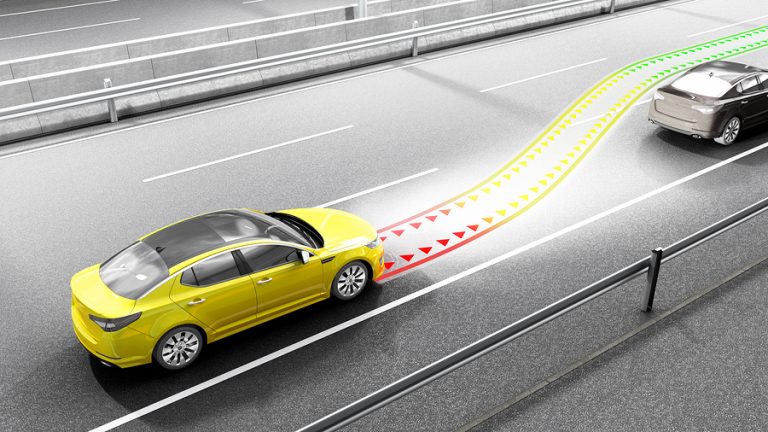 Automotive Ethernet
Automotive Ethernet
Automotive Ethernet is a physical network that is used to connect components within a car utilizing a wired network. It is intended to meet the needs of the automotive market, including meeting stringent electrical requirements (EMI/RFI emissions and susceptibility), bandwidth requirements, latency requirements, synchronization, and network management requirements.
Increased bandwidth, latency, synchronization, and network management are important parameters when it comes to support features such as driver monitoring, lane departure detection, crash prevention, and more.
Automotive wiring harnesses are heavy and expensive while automakers compete in a fiercely competitive market. They are challenged by the need to control costs, enhance performance, and improve fuel economy. Reducing component cost and complexity address the first challenge, while reducing weight helps with performance and fuel economy.
Automotive Ethernet provides a solution on both fronts. The wiring harness is the third most expensive component in many cars (after chassis) and can weigh more than a couple of hundred pounds.
However, regular Ethernet as we know it is not suitable for use in automotive applications, since it will fail in a harsh electrical environment. BroadR-Reach technology is an Ethernet physical layer standard designed for use in automotive connectivity applications. BroadR-Reach technology allows multiple in-vehicle systems to simultaneously access information over unshielded single twisted pair cable. Benefits for automotive manufacturers integrating the BroadR-Reach Ethernet standard include reduced connectivity costs and cabling weight, according to Broadcom Corporation, now Broadcom Limited, inventor of the BroadR-Reach standard.
For more information on Automotive Ethernet, see:
- An Inside Look At The Automotive Ethernet Protocol...
- Automotive Ethernet...
- Automotive Ethernet - The Definitive Guide...
- Guide to Automotive Connectivity and Cybersecurity: Trends, Technologies, Innovations and Applications...
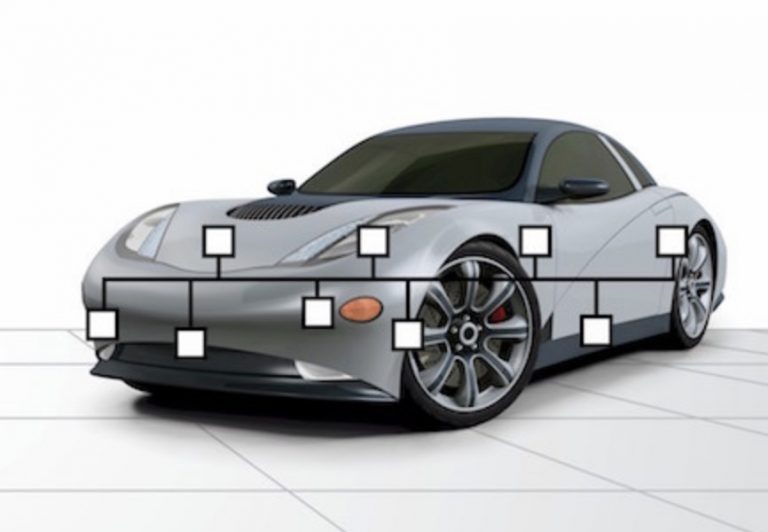 Controller Area Network (CAN)
Controller Area Network (CAN)
Controller Area Network (CAN) is a serial network technology that was initially designed for the automotive industry, especially for European cars, but it also became a popular bus in industrial automation as well as other applications. The CAN bus is primarily used in embedded systems, and as its name implies, is a network technology that provides fast communication among microcontrollers up to real-time requirements, eliminating the need for the much more expensive and complicated technology of a Dual-Ported RAM.
CAN is a two-wire, half-duplex, high-speed network system, that is far superior to traditional serial technologies such as RS232/485 in regards to functionality and reliability and yet CAN implementations are very cost-effective.
While, for instance, TCP/IP is designed for the transport of large data amounts, the CAN Bus technology comes with a focus on real-time requirements and with its 1 MBit/sec baud rate, it can easily beat a 100 MBit/sec TCP/IP connection when it comes to short reaction times, timely error detection, quick error recovery and error repair.
CAN Bus networks can be used as an embedded communication system for microcontrollers as well as an open communication system for intelligent devices. Some users, for example, in the field of medical engineering, opted for CAN because they have to meet particularly stringent safety requirements.
Similar requirements had to be considered by manufacturers of other equipment with very high safety or reliability requirements (e.g., robots, lifts, and transportation systems).
The most significant advantage of the Controller Area Network technology lies in the reduced amount of wiring combined with ingenious prevention of message collision (meaning no data will be lost during message transmission).
Controller Area Network
- Is a serial networking technology for embedded solutions.
- Needs only two wires named CAN_H and CAN_L.
- Operates at data rates of up to 1 Megabit per second.
- Supports a maximum of 8 bytes per message frame.
- Does not support node IDs, only message IDs. One application can support multiple message IDs.
- Supports message priority, i.e. the lower the message ID the higher its priority.
- Supports two message ID lengths, 11-bit (standard) and 29-bit (extended).
- Does not experience message collisions (as they can occur under other serial technologies).
- Is not demanding in terms of cable requirements. Twisted-pair wiring is sufficient.
For more information on Controller Area Network (CAN), see:
- A Brief Introduction to Controller Area Network…
- A Comprehensible Guide to Controller Area Network…
- Controller Area Network (CAN Bus) – Serial Network Technology For Embedded Systems – PPT Presentation…
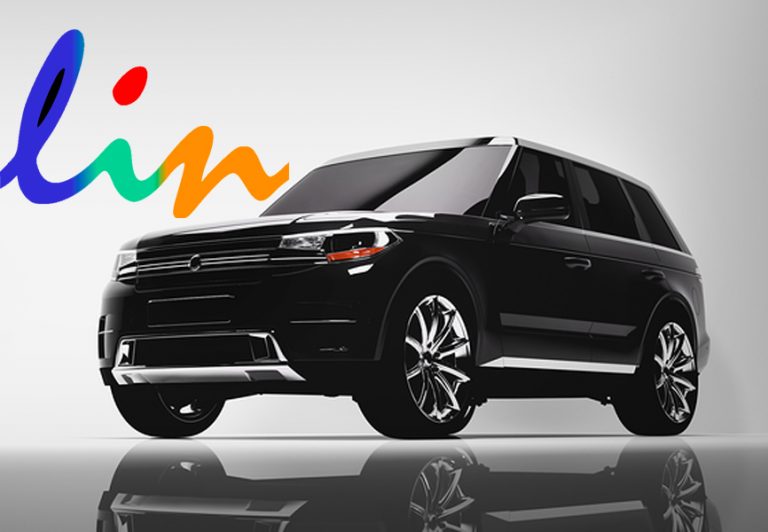 Local Interconnect Network
Local Interconnect Network
LIN (Local Interconnect Network) is a serial network protocol used for communication between components in vehicles. The demand for a second serial network emerged as the technologies and the facilities implemented in modern cars grew, while the CAN Bus was too expensive to implement for every component in the car.
European car manufacturers started using various serial communication topologies, which led to compatibility obstacles.
In the late 1990s, the LIN Consortium was established by five automakers (BMW, Volkswagen Group, Audi Group, Volvo Cars, Mercedes-Benz), with the technologies provided (networking and hardware expertise) from Volcano Automotive Group and Motorola.
The first fully implemented version of the new LIN specification (LIN version 1.3) was published in November 2002. In September 2003, version 2.0 was introduced to expand capabilities and make provisions for additional diagnostics features.
Modern automotive networks use a combination of LIN for low-cost applications primarily in body electronics, CAN for mainstream powertrain and body communications, and the emerging FlexRay bus for high-speed synchronized data communications in advanced systems such as active suspension.
For more information on Local Interconnect Network (LIN), see:
- Introduction to the Local Interconnect Network (LIN) Bus…
- Local Interconnect Network (Wikipedia)…
- The LIN Interface and Automotive Interconnects—A Perfect Match...
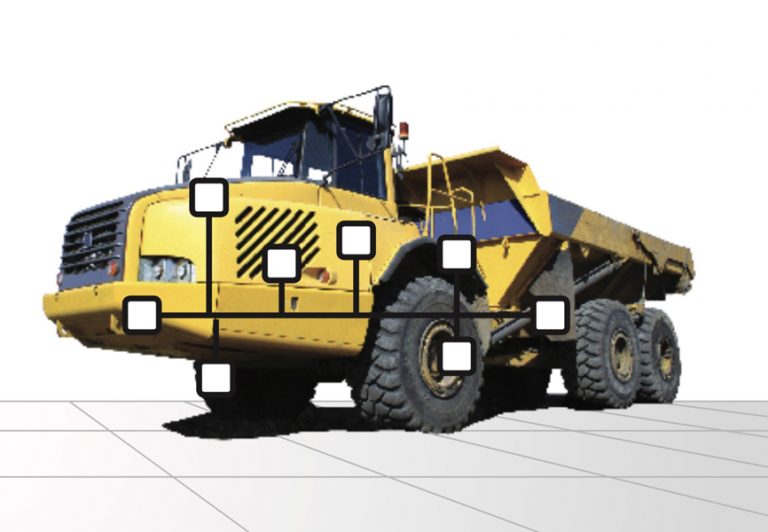 SAE J1939
SAE J1939
The Society of Automotive Engineers (SAE) Truck and Bus Control and Communications Subcommittee has developed a family of standards regarding the design and use of devices that transmit electronic signals and control information among vehicle components. SAE J1939 and its companion documents have instantly become the accepted industry standard and the vehicle network of choice for off-highway machines in applications such as construction, material handling, mass transportation, forestry machines, agricultural machinery, maritime and military applications.
Note: It is fair to say that the SAE J1939 vehicle protocol is primarily used on diesel engines, which covers all previously mentioned applications.
SAE J1939 is a higher-layer protocol based on Controller Area Network (CAN). It provides serial data communications between microprocessor systems (also called Electronic Control Units – ECU) in any heavy-duty vehicles. The messages exchanged between these units can be data such as vehicle road speed, torque control message from the transmission to the engine, oil temperature, and many more.
Note: Even though being around for many years, the SAE J1939 protocol is still gaining popularity, especially given the increased use of fleet management systems, which, unavoidably, will need data from the vehicle network, for instance, to calculate maintenance cycles. Fleet management is also tightly associated with the Internet of Things (IoT), and transportation is considered one of the fastest-growing markets for IoT.
The SAE J1939 Higher Layer Protocol
Even though extremely useful in automobiles and small, embedded applications, the CAN Bus alone is not suitable for projects that require a minimum of network management and messages with more than eight data bytes.
As a consequence, higher-layer protocols (additional software on top of the CAN physical layer) such as SAE J1939 for vehicles were designed to provide an improved networking technology that supports messages of unlimited length and allow network management, which includes the use of node IDs (CAN supports only message IDs where one node can manage multiple message IDs).
SAE J1939
- Is a standard developed by the Society of Automotive Engineers (SAE)
- Defines communication for vehicle networks (trucks, buses, agricultural equipment, etc.)
- Is a Higher-Layer Protocol using CAN as the physical layer
- Uses shielded twisted pair wire
- Applies a maximum network length of 40 meters (~120 ft.)
- Applies a standard baud rate of 250/500 Kbit/sec
- Allows a maximum of 30 nodes (ECUs) in a network
- Allows a maximum of 253 controller applications (CA) where one ECU can manage several CAs
- Supports peer-to-peer and broadcast communication
- Supports message lengths up to 1785 bytes
- Defines a set of Parameter Group Numbers (PGNs, predefined vehicle parameters)
- Supports network management (includes node IDs and an address claiming procedure)
For more information on SAE J1939, see:
- A Brief Introduction to the SAE J1939 Protocol…
- SAE J1939 – Serial Control And Communications Vehicle Network – PPT Presentation…
- SAE J1939 Address Claim Procedure – SAE J1939/81 Network Management…
- ARD1939 – SAE J1939 Protocol Stack for Aduino…
- jCOM1939 Monitor – SAE J1939 Monitor, Analyzer, And ECU Simulator…
- SAE J1939 ECU Simulation With Raspberry Pi…
- SAE J1939 Project With Arduino Uno/Mega2560: Requesting & Simulating Vehicle Identification Number (VIN)…
- Simulating SAE J1939 PGNs Used By Truck & Bus FMS (Fleet Management System) Standard…
- SAE J1939 Bandwidth, Busload, And Message Frequency…
 Loading... Please wait...
Loading... Please wait...
